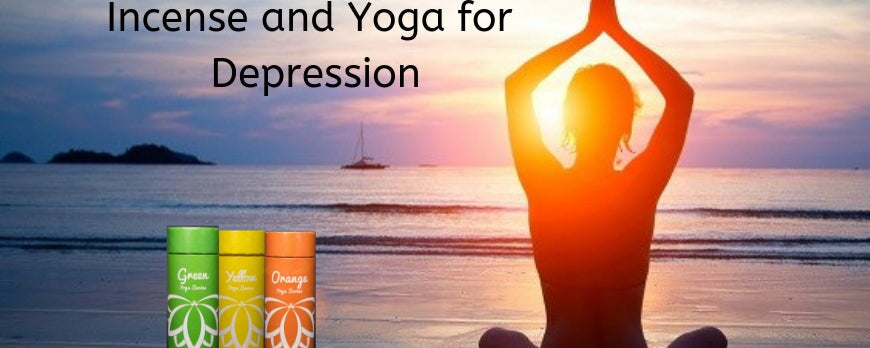Article: Yoga for depression and anxiety

Yoga for depression and anxiety
Yoga is the divine unity of the body and spirit which originated in ancient India, a country known for its traditional methods dating back to 5000BC. It is the integration of the spiritual, physical and mental state of an individual to attain a state of calm and oneness. Simply put, mind over matter. It increased traction in the western world in the early 1900s as people started noticing the benefits of yoga. Not only do the ‘asanas’ which are body postures, improve muscle strength and flexibility, but they also calm the mind and reduce stress as well.
The asanas improve circulation and promote hormone secretion making it effective in overcoming depression. It has become common lately as people have started to realize the advantages of going chemical free and minimizing medications. Unlike chemical medications, yoga does not have side effects or chemical build up. Leading Hollywood ladies Jennifer Anniston, Kate Hudson credit yoga in their success story against depression

Here are few easy beginner yoga asanas for depression to get you started
-
Surya Namaskar- The sun salutation asana is the most common in yoga poses. This will be the first one they teach in a yoga class. It is a series of 12 poses which helps in improving the circulation of the body. This is most effective in treating depression and anxiety besides improved flexibility and steadiness. The most commonly done version of this is to lift the hands over the head much like offering a prayer, starting with the right leg first over the medial patella of the left leg while breathing in and out steadily.
-
Simhasana- The lion pose. Sit Indian style on the floor with the foot of one leg over the knee of the other. The palms must be outstretched over the knee with the thumb slightly closing over the middle and the ring finger. Inhale through the nose slowly and exhale through your mouth. This asana brings about a calm and balanced feeling.
-
Balasana-The child's pose. Kneel on the floor with the toes touching each other and extend your arms over your head and lay forward on the floor with your torso resting on your inner thigh while breathing in and out regularly. This asana provides mental and physical solace and a sense of security. The child’s pose, rightly named, makes you feel protected and safe.
-
Shavasana-The corpse pose. Lay flat on the floor with legs and arms apart with the palms facing upward much like a corpse. Inhale and exhale deeply with eyes closed. This asana helps with relaxation and restoration and eases muscular tension. It helps produce a feeling of calm and ease.
-
Setu Bandha Sarvangasana- The Bridge Pose. Lay on the floor and place your legs at hips width apart, bent at the knee. Now lift your hips upward with the arms intertwined below on the ground with the thumb facing upward. Breathe in and out at a regular pace, this relaxes and calms the body. It increases circulation and produces mood-elevating hormones.
Fragrance plays an important role in influencing one's mood. Studies show they elevate or affect emotions based on one’s past experiences. Scents of lavender, frankincense, vanilla etc have proved to improve one’s mood and bring about a feeling of happiness and calm. Any yoga facility that you enter, the first thing you would notice would be the fragrance that breezes the room which by itself gives you a serene feeling. Incense calms your mind and enables you to carry out your meditations and asanas more efficiently as if yoga and aromatherapy are a match made in heaven.
Aromatherapy Essential oils for yoga
Here is a list of incenses to give you an idea of what they could be used for when you try out yoga at the comfort of your home.
Lavender - Reduces stress and anxiety and elevates the mood
Frankincense - Promote spiritual awareness and calms the mind
Tea tree - Elevates the mood, energizes the body and spirit
Bergamot - reduces stress and anxiety and acts as a sedative
Sandalwood - Improves the mood and calms the mind
Vanilla - Promotes sleep, brings about a sense of calm and peace
Rose - Improves mental strength and confidence
Mhyrr - Improves circulation and digestion
Tips when using incense for yoga
-
Make sure the room is well ventilated as too much of the aroma could be overpowering.
-
An incense stick will burn for about 45 minutes, plan the session a half-hour or so from the time the stick is lit.
-
Incense burning causes smoke, hence it is might be unsafe for people with asthma and other breathing difficulties
-
Use caution when used around pregnant woman, kids, and pets.
-
Place the incense stick where there are no valuable items around it, Get an incense stick holder.
As mentioned, incense sticks will burn a good 45 minutes each, not necessary to use it all at one go and you can always save up some for later and also be sure to choose the incense that goes with the purpose of your yoga. Check out our most complimented and adored collection of incense sticks that come in four ranges on our online store.






